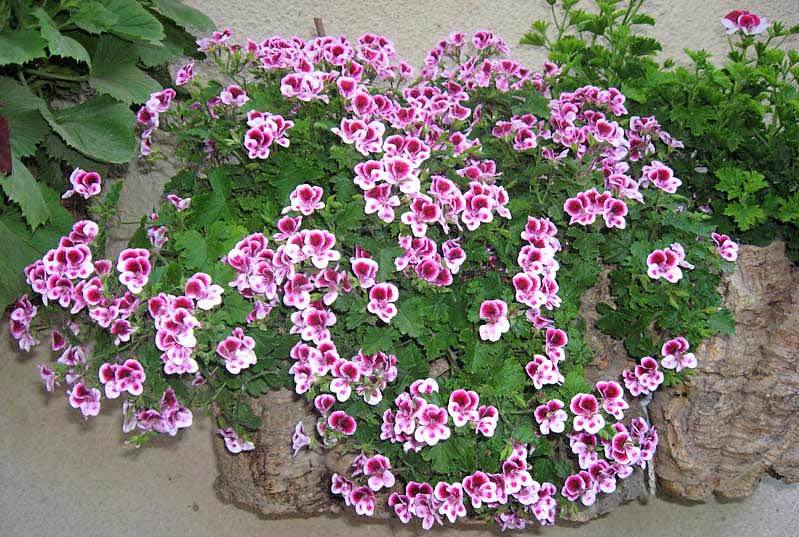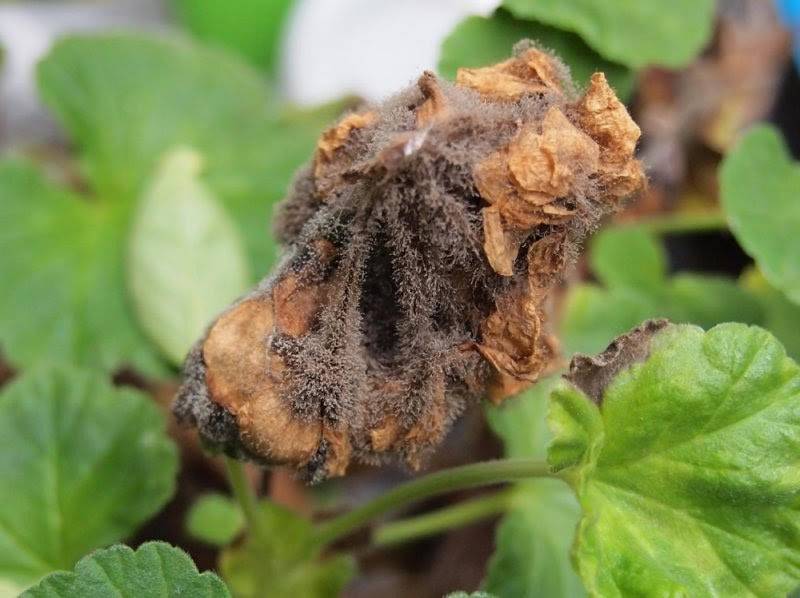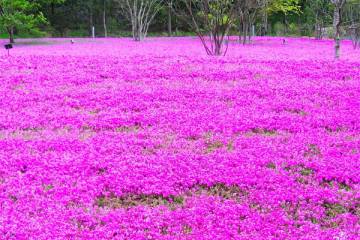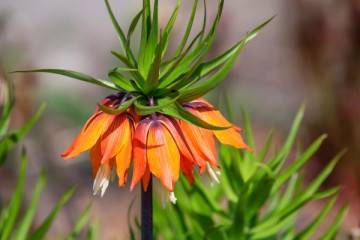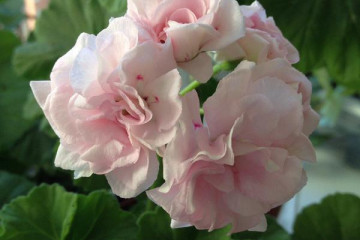Pelargonium Angel - how to plant and care
Content:
Pelargonium Angel is a beautiful and graceful plant, which is often chosen by flower growers to decorate plots. The group with this name includes several types of flowers that have distinctive genetic and other characteristics. If you want to breed such plants, you should know how to care for them.
Pelargonium Angel - what is this flower
The culture belongs to the Geraniev family. The tropics and subtropics of Africa are considered homeland.
Brief description and history of origin
The plant appeared as a result of crossing the curly and royal species back in the early 20th century. All varieties are characterized by unpretentiousness and fairly rapid growth. Plants love light and tolerate drought well.
Pelargonium has a large volume of foliage, sometimes it is terry. Small bush, grows quickly. Shoots branch well, due to which the plant acquires splendor.
Abundant flowering, flowers similar to Pansies, on one bush there are several inflorescences at once. The color of the petals is striking in its variety: from pink to purple. Flowers can be white or combine several shades at once.
Pelargonium Angels: varieties for home breeding
The new varieties are hybrid, so there are not too many of them. The breeders managed to get especially beautiful flowers.
Angel Viola
Pelargonium Angel Viola is a compact bush that blooms all summer. The flowers are pink, with crimson spots on the petals. The leaves smell nice like lemon.
Angel Orange
This type of plant is unpretentious, blooms profusely. The flowers have an original color - the center and veins are burgundy, the petals are red-orange. Leaves are dark green openwork. Bright colors make the plant an excellent decoration for gardens and summer cottages.
Michael
Small compact bush. The flowers are multi-petal, in the center they are cherry, and at the edges are white. Can be used in hanging pots, as the variety grows quickly and takes on a decorative appearance.
What home care is required for Pelargonium Angel
Geranium Angel refers to unpretentious plants. However, there are some features in the care that should be taken into account.
Illumination and temperature conditions
The flower loves light, but grows well in places where the sun is not the whole day. It grows quickly in a sunny place, the crown becomes thicker.
The Angel variety does not tolerate temperatures below 8 ° C. In the spring and summer, the pots are taken out into the fresh air, but make sure that there is not a big difference between degrees day and night. It is especially important to observe the temperature regime during flowering.
Watering rules and humidity
Pelargonium of this species does not like strong humidity. Water the plant with warm and soft water, but the soil should not be constantly wet. In summer, more abundant irrigation is carried out, in winter, watering is reduced.
Spraying for pelargonium is not important, it easily tolerates drought and room air.
Top dressing and soil quality
For a plant, it is better to choose a special soil for pelargonium or geranium. If necessary, the soil mixture can be mixed independently, taking peat, sod and a small amount of sand.
You need to feed the flower every 2 weeks from spring to late autumn. It is allowed to use any complex fertilizers, but it is worth making sure that there is no excess nitrogen. Otherwise, the plant will have more foliage than flowers. During the formation of buds, fertilizing is carried out with phosphorus and potassium fertilizers.
Flower container size
It is recommended to choose a medium-sized plant pot. It is worth remembering that the flower grows quickly, however, a large capacity stimulates the growth of shoots and leaves, but not flowering.
Pruning and replanting
You need to prune the plant a couple of times a year - in spring and autumn, sometimes in summer. This will help form a beautiful flower and stimulate abundant flowering. It is definitely worth removing dried and excess shoots.
The transplant is carried out quite rarely. The pot is selected depending on the root system. Drainage is laid at the bottom.
Features of flowering plants
The Angel variety is distinguished by its special decorativeness, for which gardeners love it so much.
A period of activity and rest
Flowering occurs in summer until autumn. In winter, the flower has a dormant period; in the spring, fresh foliage gradually appears.
Types and shape of flowers
The flowers are small in size, they are very similar to the viola flowers. The colors are varied, the upper and lower petals can have different colors, even bicolor and tricolor are possible.
Flower reproduction methods
Pelargonium Angel can be propagated at home in two ways - by cuttings and seeds.
Propagation by cuttings
This method is a great opportunity to get a new plant faster than seeds. Reproduction is carried out as follows:
- Cut off shoots up to 10 cm long; at least a couple of leaves must be present on them.
- Leave the processes to dry out a little.
- Place most of the sprout in the ground.
- After a couple of weeks, the roots will appear on the cutting.
A young plant is watered as the soil dries up, but waterlogging is not allowed.
Seed propagation
Seed propagation takes longer than using cuttings. The procedure is as follows:
- The seeds are sown in small containers with peat and sand.
- The container is covered with foil or glass and left in a bright place.
- Maintain humidity and temperature for 2-3 weeks.
- After the first shoots appear, the shelter is removed.
- The plant is transplanted to a permanent place after the appearance of 4 leaves.
If everything is done correctly, then after a while you can get a beautiful and strong plant.
Growing problems, diseases and pests
Pelargonium of the angelic variety is an unpretentious plant, but it can be susceptible to diseases and pests.
With excess moisture, the flower can be destroyed by gray rot. Damage to fungal diseases is not excluded. Pelargonium is often attacked by a whitefly that infects the leaves.
The fight against diseases and pests consists in the preventive treatment of the plant with special means. Fungicidal and antibacterial drugs are suitable. With proper care, most problems can be avoided.
Pelargonium Angel is a very beautiful plant that will delight the appearance during the flowering period.It is required to follow simple rules of care in order to get strong and strong flowers that will decorate the garden and premises.

